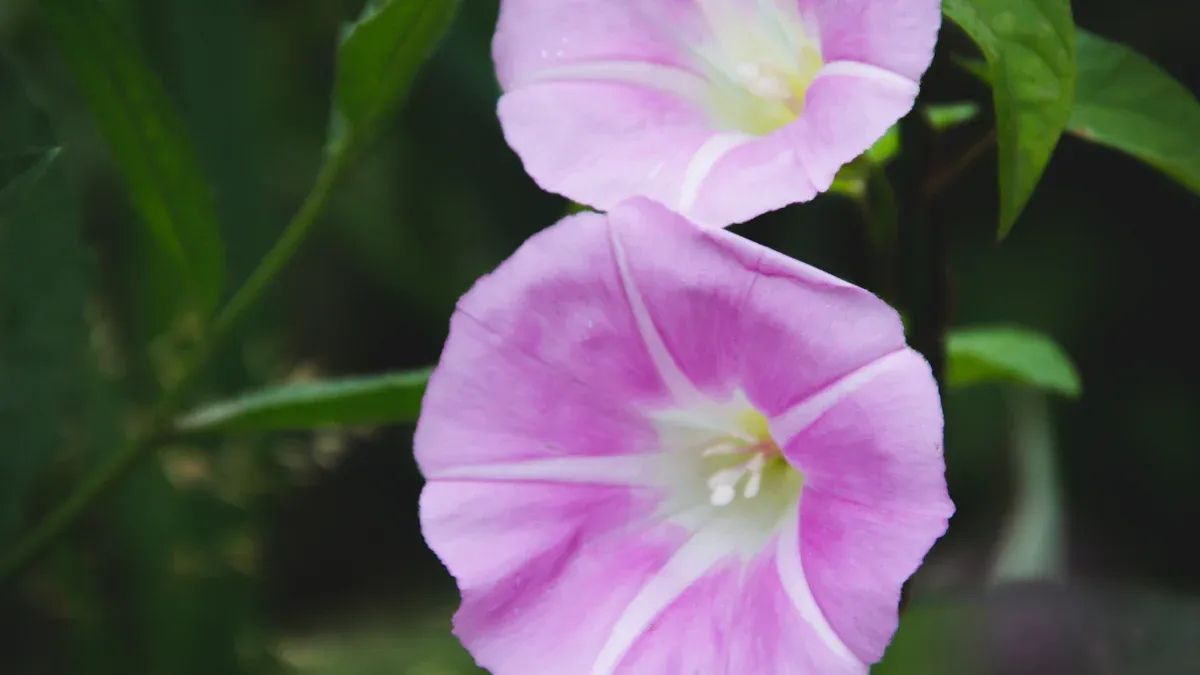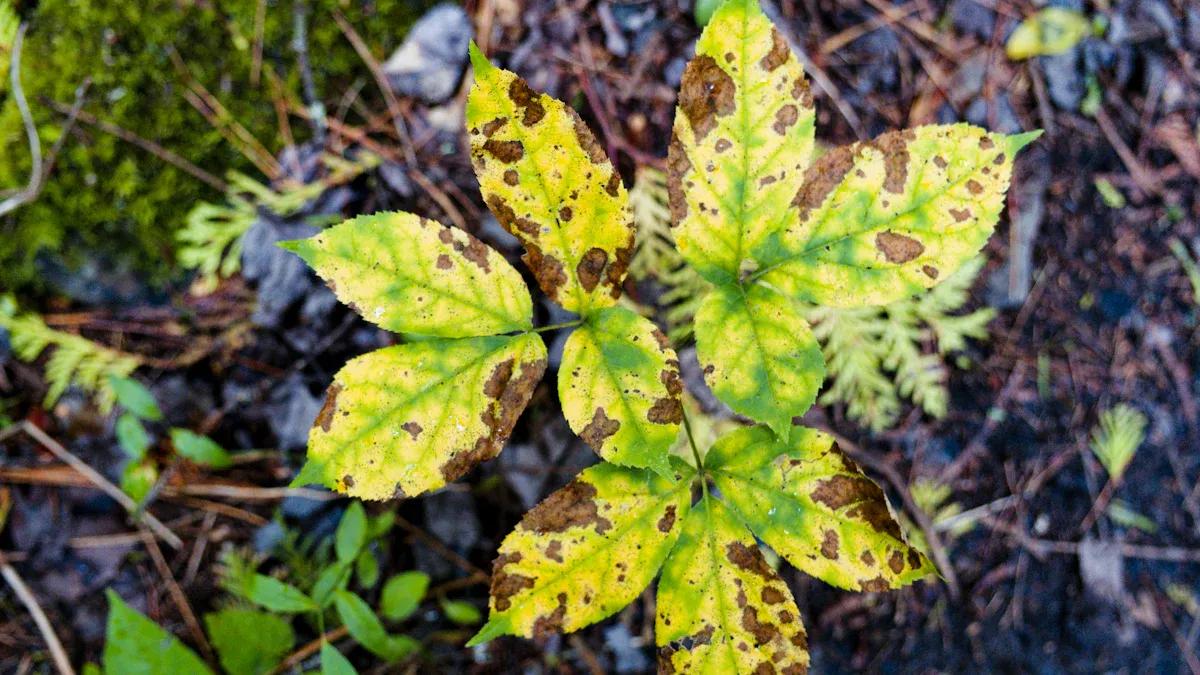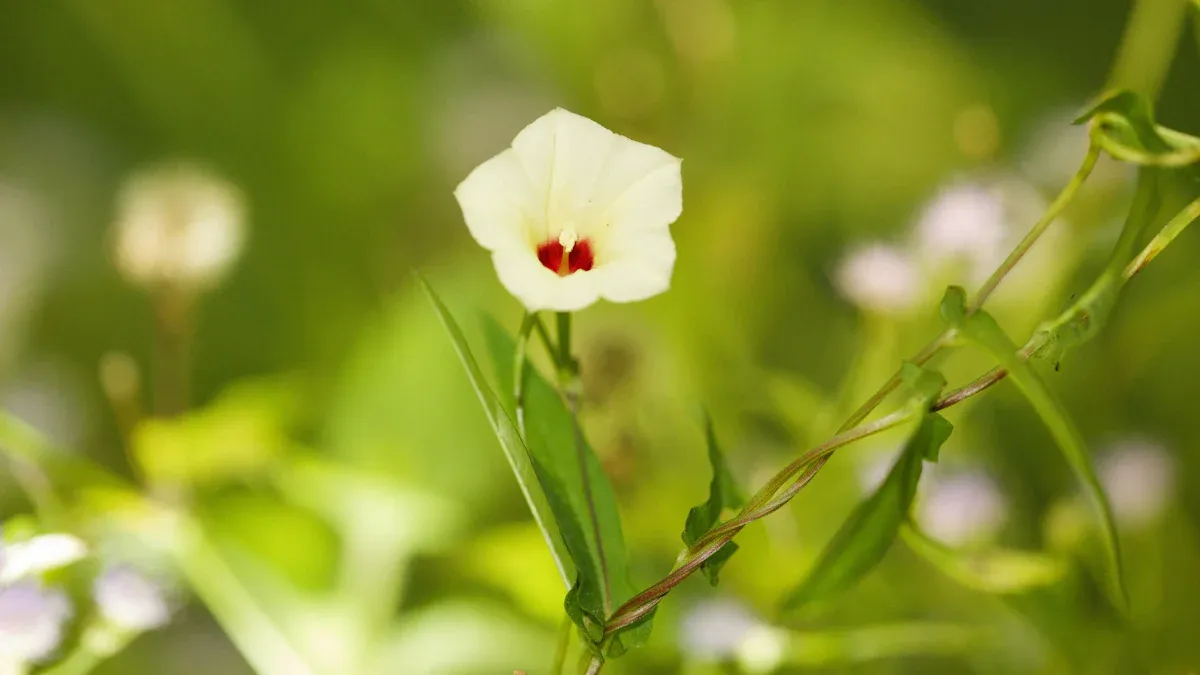
Are you worried about your Morning Glory plant dying? You’re not alone! Many gardeners face this issue. Recognizing the symptoms can help you take action. Factors like pests, environmental stress, and soil problems can contribute to decline. Let’s explore what’s going wrong so you can revive your plant.
Key Takeaways
Watch for leaf discoloration and wilting. These symptoms indicate your Morning Glory plant may need immediate attention.
Identify and manage pests like aphids and spider mites. Use organic methods such as neem oil to protect your plant without harming beneficial insects.
Ensure your soil is well-draining and nutrient-rich. This promotes healthy growth and prevents decline in your Morning Glory plant.
Symptoms

Leaf Discoloration
One of the first signs that your Morning Glory plant is in trouble is leaf discoloration. You might notice leaves turning yellow, brown, or even developing spots. Here are some common ways leaf discoloration can present itself:
Brown spots: These can vary in size, from tiny specks to large blotches. The edges may appear crisp or fuzzy, which can indicate different issues.
Water-soaked spots: If you see spots that look water-soaked with yellow halos, this could signal bacterial problems.
Fungal infections: These often show up as concentric rings or powdery halos on the leaves.
Environmental stress: Sometimes, brown spots at the edges of leaves can result from too much sun or inconsistent watering.
Keep an eye on these symptoms. Early detection can help you take action before the damage becomes irreversible.
Wilting
Wilting is another critical symptom to watch for. When your Morning Glory plant starts to droop or lose its firmness, it’s a clear sign that something isn’t right. Here are some factors that can lead to wilting:
Overwatering: Too much water can suffocate the roots, leading to wilting. Make sure the soil drains well.
Underwatering: On the flip side, if the soil is too dry, your plant will also wilt. Check the moisture level regularly.
Temperature extremes: Sudden changes in temperature can stress your plant, causing it to wilt. Morning Glories thrive in warm conditions, so protect them from cold drafts.
By paying attention to these symptoms, you can better understand what might be causing your Morning Glory plant to decline. Regularly inspect your plants for these signs, and don’t hesitate to adjust your care routine as needed.
Causes of Morning Glory Plant Decline

Understanding the causes of decline in your Morning Glory plant is crucial for effective care. Let’s dive into some common culprits that might be affecting your plant’s health.
Insect Infestations
Insects can wreak havoc on your Morning Glory plant. Common pests include aphids, spider mites, and whiteflies. Here’s how you can identify and manage these infestations:
Aphids: These tiny insects suck sap from the leaves, leading to yellowing and curling. You might notice sticky residue on the leaves, which is a sign of their presence.
Spider Mites: These pests thrive in dry conditions. Look for fine webbing on the undersides of leaves. They can cause significant damage if not controlled.
Whiteflies: These small, white insects can also weaken your plant by feeding on its sap.
To combat these pests, consider using organic methods like neem oil or insecticidal soap. These options are effective without harming beneficial insects. For minor infestations, you can simply rinse the pests off with water.
Environmental Stress
Your Morning Glory plant can also suffer from environmental stress. Factors like temperature extremes and inconsistent watering can lead to serious issues. Here are some key points to consider:
Temperature Extremes: Morning Glories prefer temperatures between 20°C to 30°C (68°F to 86°F). If temperatures drop too low or rise too high, you may see symptoms like leaf curling and wilting.
Irregular Watering: Both overwatering and underwatering can disrupt your plant’s health. Inconsistent moisture levels can lead to curling leaves and affect blooming. Make sure to check the soil regularly to maintain even moisture.
Tip: Monitor humidity levels as well. Low humidity can cause leaf curling and browning, indicating that your plant needs more moisture in the air.
Here’s a quick look at how environmental conditions can impact your Morning Glory plant:
Environmental Condition | Effect on Morning Glory Plant |
|---|---|
Water Deficit | Strongly correlated with decline, affecting floral signals and nectar rewards. |
Pollinator Access | Limited effect compared to water deficit; plants under pollinator restriction produced more seeds than those under water reduction. |
Soil Issues
The health of your soil plays a vital role in the vitality of your Morning Glory plant. Here are some essential soil characteristics to keep in mind:
Well-drained, moderately fertile soil: Morning Glories thrive in soil that drains well. Avoid overly rich soils that promote foliage over flowers.
pH Levels: Aim for a slightly acidic to neutral pH (6.0-7.0). This range supports nutrient availability and microbial activity, which are crucial for plant health.
Nutrient-Rich Soil: Nutrient-rich soil promotes faster growth. Poor soil can stunt development and lead to decline.
Note: Maintaining a balanced pH is crucial for promoting disease suppression in plants like Morning Glory. Soil health is essential for suppressing soil-borne diseases and providing necessary nutrients.
Common mistakes gardeners make that lead to Morning Glory plant decline include:
Improper soil conditions: Ensure your soil is well-draining and not overly rich.
Inadequate sunlight: Morning Glories thrive in full sun. If they’re in semi-shaded areas, they may struggle.
Watering issues: Keep the soil evenly moist, avoiding both overwatering and underwatering.
By understanding these causes, you can take proactive steps to ensure your Morning Glory plant thrives.
To keep your Morning Glory thriving, diagnose any issues quickly. Here are some steps to restore its health:
Adjust light exposure.
Fertilize with a balanced mix.
Provide adequate support.
Monitor temperature.
Inspect roots for rot.
Improve air circulation.
After treatment, remember to water regularly, ensure bright light, and replenish nutrients every month. 🌱
FAQ
What should I do if my Morning Glory leaves are turning yellow?
Check for overwatering or nutrient deficiencies. Adjust your watering schedule and consider fertilizing with a balanced mix.
How often should I water my Morning Glory plant?
Water your Morning Glory when the top inch of soil feels dry. This usually means watering every few days, depending on conditions.
Can I grow Morning Glory in partial shade?
Morning Glories prefer full sun. While they can tolerate partial shade, they may not bloom as profusely or grow as vigorously. 🌞

